Five Temperate Rainforest Plants to Know in the Pacific Northwest
By Jason Knight
Many temperate rainforest plants can be used for food, medicine, or made into tools. The following wild plants are some of the most useful species in the Pacific Northwest.
Top Temperate Rainforest Plants
|
Stinging Nettle (Urtica dioica): Stinging nettle is a common plant in Pacific Northwest rainforests. Commonly known for its uncomfortable sting, it has many practical uses, including edible, medicinal, and utilitarian qualities. The young leaves can be eaten raw (carefully) or cooked, and are an excellent source of iron, B vitamins, and protein. Infusions (strong teas) made from the leaves are also a good preventative medicine for allergies. In the fall the standing dead stalks can be processed to make very strong cordage and fiber. |
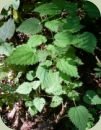 |
|
Western Red Cedar (Thuja plicata): Western Red Cedar is a widespread tree in the Pacific Northwest. It has a seemingly endless list of uses. Traditionally, the bark was used for baskets, rope, mats, and clothing. The wood was used for plank long houses, canoes, paddles, and many other types of tools. A tincture can be made from the fronds that is a topical antifungal medicine. The roots make a good emergency bow drill string for making fires, and the shredded inner bark makes a great tinder material. |
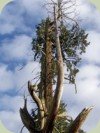 |
|
Salmonberry (Rubus spectabilis): Salmonberry is one of the most abundant rainforest plants in the Pacific Northwest. Salmonberry is related to blackberry and raspberry, and produces an edible berry in the spring that looks like an orange-colored raspberry. The tender spring shoots can also be eaten, and have a sweet, almost candy-like, taste to them. A three-foot long, straight, finger-width section of a salmonberry branch can make a good hand drill stalk for making friction fires. |
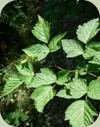 |
|
Fireweed (Epilobium angustifolium): Fireweed is common along cleared or burned areas, forest openings, and along roads. The young spring leaves can be eaten raw or cooked and are very high in vitamin C. The stalk can be processed into fibers that make good cordage. The seed fluff can be stuffed into a jacket to create extra insulation on a cold day. The fluff is also quite flammable and can be used as a tinder bundle to help start a fire. |
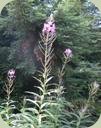 |
|
Cattail (Typha latifolia): Cattail is a common plant of wetlands in the temperate rainforests of the Pacific Northwest. Cattail also has a variety of uses. The spring shoots can be cooked and eaten like a vegetable. The long leaves can be woven into mats and the seed fluff can make good insulation and fire-starting materials. The center stalk can also be used as a hand drill for making fires. |
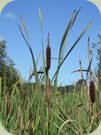 |
By the way, when you're out foraging, it's important to know how to stay safe in the outdoors, especially if you were to get lost. Right now you can get a free copy of our mini survival guide here, where you'll discover six key strategies for outdoor emergencies, plus often-overlooked survival tips.
Additional Resources:
Temperate Rainforest Plants - Olympic National Park
Be More Prepared For Your Next Outdoor Adventure!
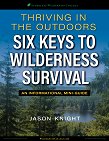
Don't leave home without knowing these six essential survival skills. Our free survival mini guide reveals the strategies of:
- Shelter & fire to prevent the number one cause of death
- Obtaining clean water to avoid life-threatening dehydration
- Common wild survival foods and other critical skills!

Related Courses:
Wild Edible & Medicinal Plants Courses at Alderleaf
Wild Mushroom Identification Class

About the Author: Jason Knight is a cofounder of Alderleaf Wilderness College and the author of The Essential Skills of Wilderness Survival. He has been teaching wilderness skills for over twenty-five years. Learn more about Jason Knight.
Return from Temperate Rainforest Plants back to Wild Plants Articles
Is The Essential Wilderness Survival Skills Course Right for You? Take the "Online Survival Training Readiness" Quiz
See for yourself if this eye-opening course is a good fit for you. It takes just a few minutes! Get your Survival Training Readiness Score Now!

Grow Your Outdoor Skills! Get monthly updates on new wilderness skills, upcoming courses, and special opportunities. Join the free Alderleaf eNews and as a welcome gift you'll get a copy of our Mini Survival Guide.

 The Six Keys to Survival: Get a free copy of our survival mini-guide and monthly tips!
The Six Keys to Survival: Get a free copy of our survival mini-guide and monthly tips!
Learn more